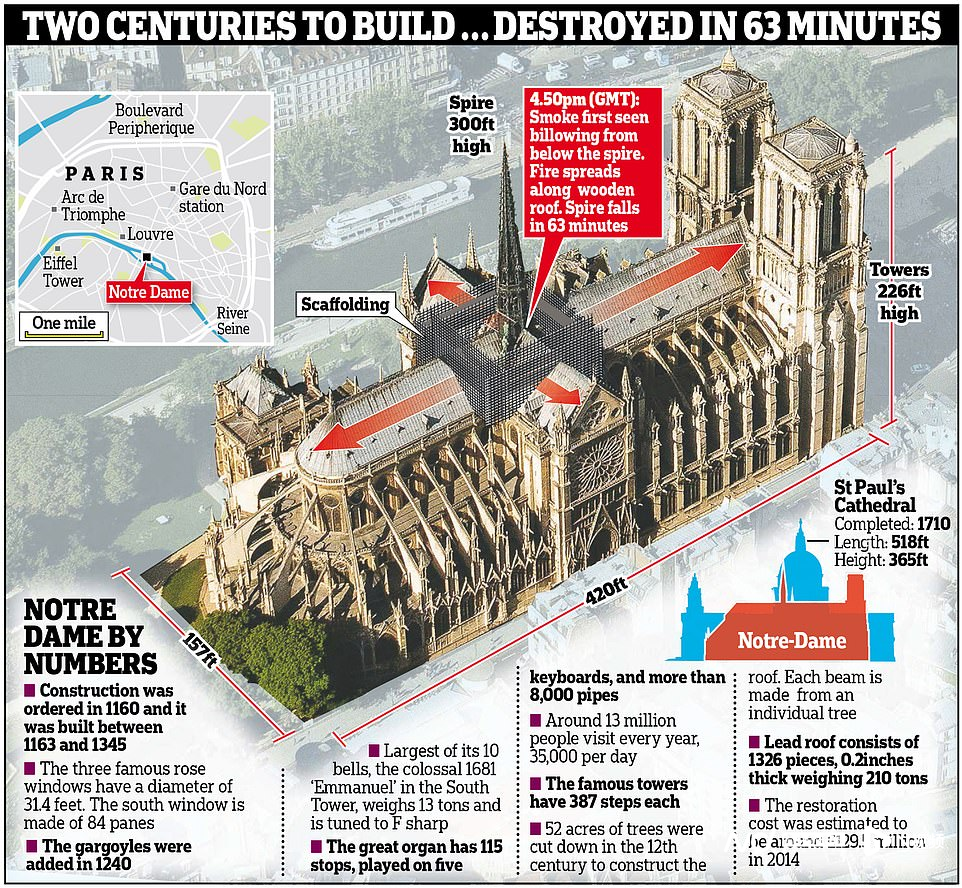French archaeologists announced on April 14 that in preparations for the reconstruction of the ancient spire of Notre Dame Cathedral last month, workers had discovered a well-preserved 14th-century lead sarcophagus 20 meters below the church, which forensic experts and scientists would reveal.

On April 15, 2019, Notre Dame Cathedral was destroyed by a fire.
Notre Dame Cathedral was reportedly destroyed by a fire on April 15, 2019, just a day before the fire engulfed the third anniversary of the 12th-century Gothic landmark, the French National Institute of Archaeology (INRAP) said at a news conference on the same day that in preparations for the reconstruction of the church's ancient spire last month, workers found a well-preserved lead sarcophagus buried 65 feet (19.8 meters) underground, lying in the brick pipes of the 19th century heating system.
Workers found a lead sarcophagus in the underground of the church last month, and scientists will soon open the coffin to study.
THE SARCOPHA, WHICH IS 1.95 metres (6 ft 4 in) long and 48 cm (1 ft 6 in) wide, was removed from the cathedral on April 12 and is currently kept in a safe place and will be sent "soon" to the Institute of Forensic Medicine in the southwestern city of Toulouse, INRAP said.
Scientists believe the sarcophagus is much older, probably belonging to the 14th century, as it was discovered under a mound with 14th-century furniture.
Scientists have peeked inside the sarcophagus with an endoscopic camera and found the upper part of a skeleton, a pillow of leaves, and perhaps hair, textiles and dried organics.
Archaeologists have found more medieval artifacts beneath the church.
Lead archaeologist Christophe Besnier said forensic experts and scientists would open the sarcophagus and study its contents to determine the sex of the skeleton and its health, and would also use carbon dating techniques to determine the age of its death.
Besné said that if it turns out to be a medieval sarcophagus, then we have found an extremely rare funerary.
Archaeologists hope to determine the social hierarchy of the dead. Considering the location and style of burial, the tomb owners were likely to be the elite of the time, and their names may appear in the parish's tomb register.
Excavations of the cathedral, which have just concluded, will now give way to long-term analysis and research to better identify and identify unearthed furniture, organic debris, DNA and other materials.
The sarcophagus is reportedly not the only notable discovery at Notre Dame. Archaeologists have also found a statue, 10 medieval plaster sarcophagus, and a treasure trove of fragments of original roof screens dating back to the 13th century.
In one of the sarcophagus, archaeologists found remains of fabric embroidered with gold thread and some skeletons.
Dominique Garcia, head of INRAP, said the human skeleton is not an archaeological object and that once they have completed their study of the sarcophagus, the skeleton will be returned, and INRAP is studying the possibility of "re-placing" it in the cathedral.
Text/Nandu reporter Chen Lin